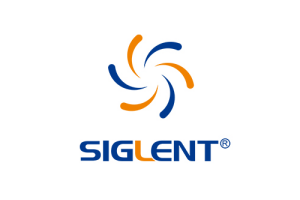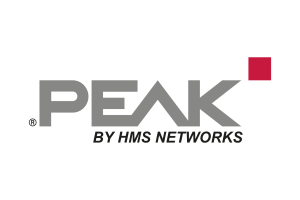20 Years of COGD
The Future of Obsolescence Management
How effective obsolescence management must—and can—look in today’s environment was the topic of the COGD meeting. That the association knows what it’s talking about is underlined by one fact: it coincided with the twentieth birthday of the German Chapter of IIOM.
For now 20 years, the Component Obsolescence Group Germany (COGD) has been dedicated to identifying obsolescence risks for manufacturers of long life capital goods early, analyzing them, and developing strategies to minimize negative impacts. The COGD marked this milestone by celebrating it in style at its Q2 2025 meeting, held at Panasonic’s Customer Experience Center in Ottobrunn near Munich. Panasonic is a world leading company in manufacturing and developing machine systems for component pick and place automation. Supply chain management and oversight along the production stages are central concerns for Panasonic. As part of its »Autonomous Factory« concept, Panasonic developed »PanaCIM«, a comprehensive Manufacturing Execution System in which obsolescence management plays a key role.
»From Chaos to Control«
The core message was summed up by Yo Hayashi, Head of Sales, Panasonic Connect Europe, at the birthday meeting in Ottobrunn: »From chaos to control.« While Panasonic cannot directly influence external factors, »we can control their effects and reduce the risk.«
This example shows that obsolescence management has now truly arrived in much of the industrial sector—reflected in the COGD’s growth. Currently, 172 companies are members of the German chapter within the International Institute of Obsolescence Management (IIOM), making COGD the largest chapter within IIOM.
At least in Germany, the industry as a whole today is aware of obsolescence risks—thanks in no small part to the persistent work of COGD. That hadn’t always been the case: in April 2005, the first COGD office was founded. Many members still fondly recall the tenth anniversary, held at the Flugwerft Schleißheim, an external branch of the Deutsches Museum. »Even back then we recognized that obsolescence management is more important than ever,« recalls Axel Wagner, current honorary chairman of COGD and corporate lawyer (EMEA) at Asteelflash Holding.
More Innovation Means More Obsolescence
Over the past decade, this topic has become even more pressing – especially for manufacturers of long lived industrial capital goods. The issue stems from the positive acceleration of tech innovation: new components and systems are launched ever more quickly. »The more new things come, the faster things become obsolete,« Axel Wagner explained in his address, which reflected on 20 years of COGD and projected into the future.
The current hot button issues clearly illustrate this shift: smartPCN, the IEC 62402 standard (expected in 2026), supply chain resilience, and the circular economy. »Going forward, obsolescence management must shift from primarily reactive to proactive—and we must think even more internationally,« he urged members and guests.
1997: Beginnings of the Original Obsolescence Group
The review also made it clear: obsolescence wasn’t a brand new issue 20 years ago. In safety critical fields like military technology, aerospace, or rail, where systems must remain operational for decades, ensuring long term availability was already a major challenge in the 1990s. NATO programs like DMSMS (Diminishing Manufacturing Sources and Material Shortages) early on highlighted the need for systematic obsolescence management in public and defense sectors. Yet it wasn’t until 1997, when Bombardier employees Detlef Blum and Richard Russel launched the first Component Obsolescence Group in the UK.
2005: COGD Is Born
The idea of collaborating with component manufacturers, service providers, and other industry stakeholders threatened by obsolescence proved so successful that in spring 2005 Germany launched its own organization, initially a subgroup of COG UK. Under the chairmanship of Briton Mike Bews, it began with 30 companies mainly from the electronics industry. Over two decades, COGD has grown to 172 members and become Germany’s leading national dialogue platform for proactive and reactive obsolescence management—now the largest national chapter within IIOM, the successor to COD UK.
COGD’s Growth Reflects an Ongoing Challenge
Axel Wagner is proud of the organization’s progress—and sees it with mixed feelings. »Member growth is welcome, but it also proves that discontinued or suddenly unavailable materials, software, electronic components and spare parts have become serious problems for more and more industrial companies,« he said.
Industries such as automation, automotive, rail, medical, military, and manufacturing are often forced to maintain spare parts over decades, even as component life cycles shorten and obsolescence risks—from geopolitics to natural disasters, stricter environmental laws, and cyberattacks—increase.
Discontinuations Have Exploded
»Discontinuations have always happened, but over the past two decades they’ve skyrocketed—especially in electronic components,« Wagner explained. Consumer technology’s short lifecycles—from smartphones to smartwatches—are a key driver. Resilience in international supply chains has also become vital. For many mid sized companies, keeping track of latent supply chain risks and acting preemptively is now a major personnel and financial strain—something Wagner knows from long experience.
COGD: Support with Advice and Action…
Following in the footsteps of predecessors like Dr. Wolfgang Heinbach, Ulrich Ermel, and Detlef Blum, Axel Wagner and the COGD board aim to support affected companies with both advice and practical help. They do so via expert presentations at quarterly meetings, working groups on diverse topics, member dialogue forums, in house fairs, and COGD organized lecture series at trade fairs and international conferences.
…and concrete Initiatives
At the anniversary ceremony, Wagner highlighted successful initiatives such as inclusion of the smartPCN standard (initiated by COGD) in IEC 62402, collaboration with law firm ReachLaw, and engagement with the Electronics Industry Association Alliance, where COGD together with FED and FBDi advocate for major bureaucratic reduction in the electronics sector.
Making Obsolescence Management Effective
Going forward, the key to eliminating or at least reducing obsolescence risks will remain continuous, intensive exchange of information and data with manufacturers, associations, policymakers, and other members.
»Efficient obsolescence management requires that companies identify potential supply chain vulnerabilities early—not just before the series production phase, but already during evaluation and development of a new product,« Wagner emphasized.
The precondition is a sufficiently large, constantly updated, and preferably automated data repository, supported by experience and expertise. Interested businesses and individuals can gain just that at COGD: »And we’ll do everything to ensure that continues for the next 20 years.«







